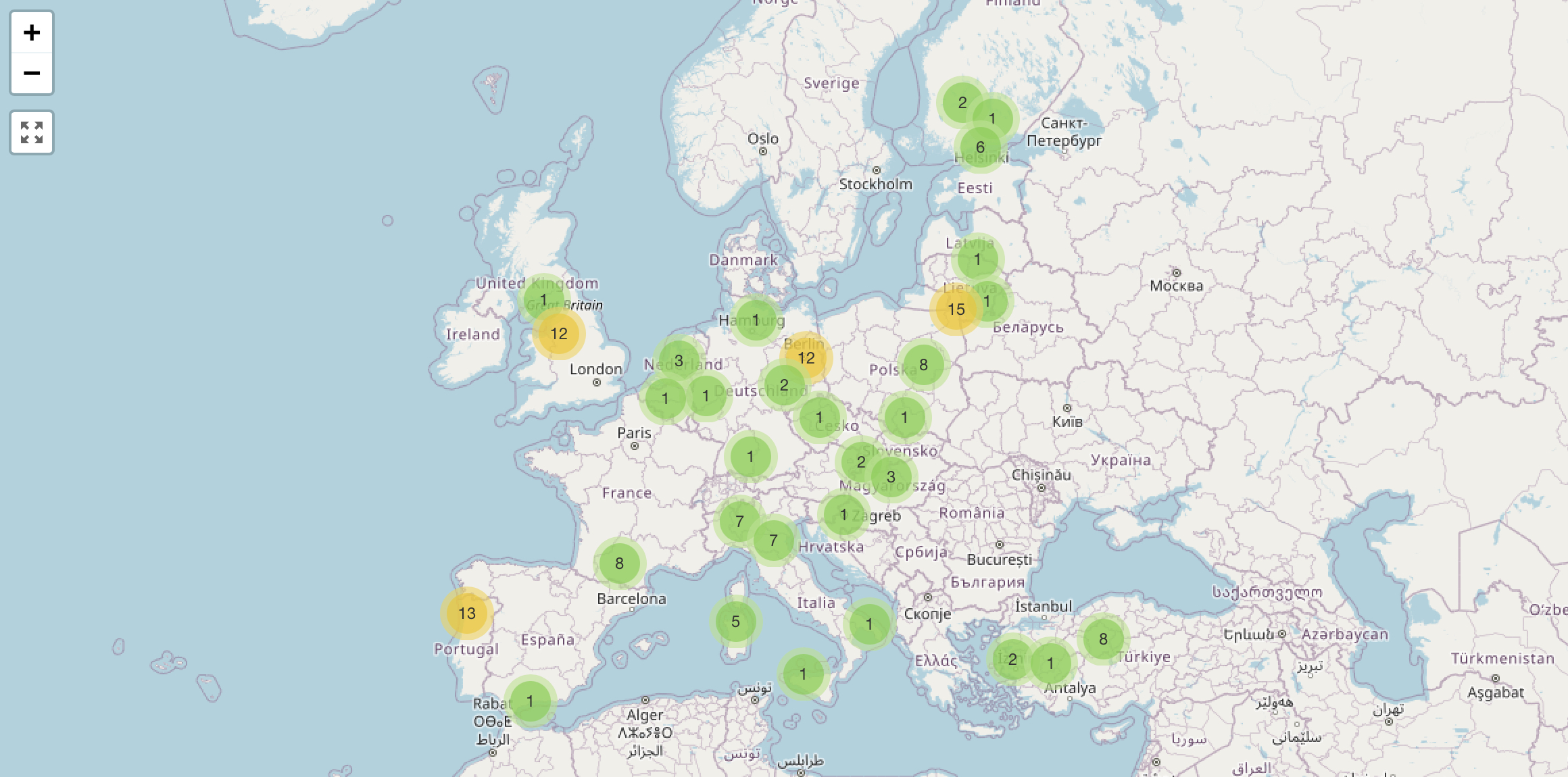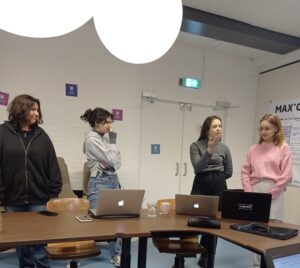Community of personal needs
DIALOGUE & INTERACTION
The method can be used in various contexts involving groups of people who want to design a common space or project together, such as gardens, public spaces or urban planning scenarios.
Short summary of the practice
The method involves a collaborative activity where a group of at least four participants, aged 2 and above, communicate and share their visions and needs for a community using drawings instead of words. The goal is to create a unified community design that incorporates everyone’s requirements. Participants use colored chalk or drawing materials on a large sheet of paper, either outdoors on a pavement or indoors on a table or floor. The duration of the exercise can range from 30 to 120 minutes. The activity promotes inclusiveness, non-verbal communication of personal needs, and cooperation. It has been used to encourage co-design, civic participation, inclusiveness, interculturality, and non-formal education. The method can also be applied to drawing other communal spaces such as cities, towns, or villages.
Goal of the practice
Create a unified community.
Target group
All citizens
Number of participants: Unlimited
Age of participants: Between 2-99
Materials
- Coloured chalk or drawing materials (e.g., markers, crayons, pencils)
- Large sheets of paper or a suitable drawing surface
- Optional painting and drawing materials depending on the location (e.g., outdoors or indoors)
Method Settings
One needs an outdoor area or a large open space on the ground. One can draw on the pavement or on large sheets of paper or printed maps.
Duration
The duration of the method can vary from 30 to 120 minutes, depending on the complexity of the design and the number of participants.

Preparation
No specific preparation is needed. However, ensure that you have enough drawing materials and space available for the participants to work comfortably.
Step by step guide
The method has been used in various contexts involving groups of people who want to collaboratively design a communal space or project, such as gardens, public areas, or urban planning scenarios. Its routes are in peacebuilding training and have been applied in the context of urban gardens by CRN.
How does the method work – Step-by-step process:
Step 1: Introduction and Explanation
Explain the purpose of the activity to the participants, emphasizing the goal of creating a collaborative design that incorporates everyone’s needs and visions. Distribute drawing materials, which could include colored chalk, large sheets of paper, and various painting and drawing materials, depending on the location (outdoors or indoors).
Step 2: Silent Designing
Instruct participants to work silently and individually to create their own garden design on the provided space, integrating it with the work of the others. Encourage them to express their preferences and needs through drawings rather than words.
Step 3: Collaboration and Integration
After a set timeframe (30 to 120 minutes), ask participants to gather around the collaborative design area. Invite participants to take turns sharing their individual designs with the group, explaining their choices and concepts behind the drawings.
Step 4: Co-Designing
Encourage participants to discuss and negotiate ways to integrate their designs into a single, unified garden plan. This involves identifying common elements, resolving conflicting ideas, and finding compromises that accommodate everyone’s needs.
Step 5: Reflection and Feedback
Once the common design is complete, invite participants to reflect on the collaborative process. Ask them to share their thoughts on the experience, the challenges faced, and the compromises made.
Step 7: Celebration
Celebrate the successful creation of a unified design that incorporates the diverse needs and visions of the participants.
Expected output
The expected output of the method is a collaborative visual representation of a community that incorporates the needs and visions of all participants. Ideally, the results should reflect a balanced integration of individual preferences, taking into account various elements such as layout, features, and aesthetics. The design should demonstrate a harmonious synthesis of diverse ideas, resulting in a coherent and imaginative community image.
DOs, DONTs and ethical considerations of the method
DOs of the method:
- Inclusivity: Ensure that all participants’ input is considered and integrated into the design.
- Balance: Strive for a design that combines different elements without favoring one individual’s preferences over others.
- Creativity: Encourage participants to think creatively and contribute unique ideas to enrich the collaborative design.
- Communication: Emphasize the use of drawings as a form of non-verbal communication to express needs and preferences.
- Flexibility: Remain open to modifications and adjustments as the design evolves through collaboration.
DONTs of the method:
- Dominance: Avoid letting one person’s ideas dominate the design process, which can marginalize others.
- Ignoring Input: Do not dismiss or overlook any participant’s contributions; all ideas should be valued.
- Lack of Inclusivity: Ensure that participants of all ages and backgrounds have the opportunity to contribute, avoiding exclusivity.
- Overcomplication: Avoid making the design overly complex or cluttered, as it may hinder the collaborative aspect.
Change the method brings to the communities
The collaborative design and negotiation method of the Gardens of Personal Needs brings about significant positive changes within the communities where it is implemented. These changes encompass a range of aspects. Inclusivity is a core principle of the method, as it involves a diverse group of participants. This approach ensures that a wide spectrum of perspectives and needs are thoroughly considered during the design process. Empowerment is a key outcome of the method, as participants are empowered to contribute their ideas and preferences. This instills a sense of ownership and influence over the final design, leading to increased community engagement and pride.
The method fosters cooperation and communication among participants, who collaboratively work to harmonize disparate ideas and create a unified design. This cultivates a strong sense of community and shared purpose. Moreover, the method often results in enhanced designs due to its collaborative nature. The varied inputs from participants contribute to more creative and comprehensive designs that thoughtfully address numerous factors, resulting in spaces that are both functional and aesthetically pleasing. In addition, the method helps to identify sustainable solutions. By involving community members in the design process, the method helps uncover sustainable and contextually appropriate solutions that align with the long-term needs of the community.
Adaptation/Application of the method
This method is adaptable to various situations, making it a versatile tool for community engagement and development:
In urban planning, the method can be applied to involve residents in the planning of urban spaces, parks, and public areas. This ensures that the final design is well-aligned with the community’s preferences and requirements. In community development projects, such as the creation of communal gardens, playgrounds, or gathering spaces, the method can play a pivotal role in engaging community members and soliciting their input for the best possible outcome.
The results of implementing this method create a range of positive outcomes. Heightened community engagement is a natural result, driven by the active participation and involvement of community members. This helps cultivate a sense of shared responsibility and commitment. Enhanced designs are a direct consequence of the collaboration. The contributions from participants help to adapt the space and the awareness of it to a wide array of needs and preferences, which otherwise might be forgotten. Empowerment and ownership are strengthened, as participants experience a heightened sense of influence over the final outcome. Furthermore, the method promotes improved problem-solving. Collaborative discussions facilitate the identification and resolution of potential challenges, ultimately resulting in more effective and sustainable solutions.
Credit, References, and Resources
Link to the project example: GARDENS as inclusive Green Learning places – https://crnonline.de/project/gardens
Related posts

Active Citizenship
Active citizenship in this context refers to the power of individuals or small resident groups to proactively engage in community mapping exercises for improving their city or neighborhood.

ArcGIS Online
ArcGIS Online provides a cloud-based mapping and analysis solution. It is used to create interactive web maps, analyse data, share and collaborate.

Civic Alert
Civic Alert is a platform designed to facilitate communication between citizens and governments. Citizens can use their mobile application to report problems in the city to the authorities in three easy steps.
